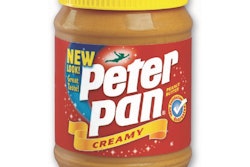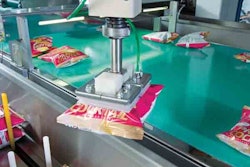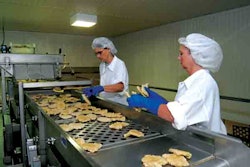Needless to say, a nation so vastly huge and diverse is unlikely to be fairly characterized even by a rash of recent product purity scandals, and it’s not my intent to imply otherwise. So you won’t hear me jumping to conclusions that products from this emerging world power are suddenly somehow all suspect. And trade policy is not the topic today either.
But there is a message I think the recent incidents do justify, and it is this: It’s time to seriously consider putting increased product quality checks in place if you import raw materials or finished goods from China, or anywhere else for that matter. Get written guarantees from suppliers of course, that the product meets applicable purity specifications, is free of contaminants, sure. Exactly what you do depends on the precise product you are dealing with, because ordinary GMP practices for drugs typically include confirmatory assays anyway, and individual products need to be evaluated for hazards uniquely.
But if you have a sense that good judgment recently pushed you one giant step toward implementing more, rather than fewer, quality assurance controls on your products and materials, I am here to tell you your good judgment is correct. You ought to seriously think about whether you can do more to assure that your products are what they are supposed to be. This goes for whether you are protecting against safety hazards, or against “economic adulteration,” in which the product is safe but it doesn’t contain the proper ingredients in the proper proportions and therefore the consumer could suffer an economic harm.
This is a question we get quite regularly: How much checking is enough? It’s a question that combines legal and regulatory standards that tend to be both strict in their standards but vague in the specifics at the same time, with quality assurance steps like chemical and microbiological assays, protections and controls on handling, and other very detailed technical nitty-gritty.
And it becomes clear when you think about the issue for even a minute that there is quite literally a wide continuum of possible approaches to quality assurance for food, dietary supplement,
cosmetic, drug, medical device and other products, that are more or less thorough, more or less careful, more or less clearly advisable from experience or just traditions, and more or less dictated by regulation. A company has to balance these considerations and develop an approach to quality that addresses all these concerns to assure that its products are consistently going to be in complete compliance with the Food and Drug Administration requirements.
Undeniably, a review of
Drugs:
Also, Zheng Xiaoyu, former director of
Pet food: Pet food containing wheat gluten and rice protein concentrate imported from
Melamine has no approvals for use in human or animal food in the
A portion of the pet food was used to produce animal feed, for hogs and chickens and others. FDA said in a news release that the likelihood of human illness after eating pork from hogs that were fed the contaminated product would be very low.
Toothpaste: Toothpaste made in
Seafood: In July 2007 FDA began indefinitely detaining imports of Chinese seafood until it is shown to be free of residues from drugs that are illegal in the
Board in buns—NOT: It was recently reported that Chinese street vendors were using paperboard scraps as an ingredient in a filling for steamed buns. Except that in late July, this report of phony food was itself declared a phony, a fabrication by a freelance journalist. Is it good news that this bad news was probably fake? Well, kind of we’re glad there wasn’t paperboard in buns, but fake news is reportedly a common problem in
Honey: A group of U.S. Senators is calling for FDA to ban imports of honey that they say is actually blended with sugar, or labeled as a blend, but then sold to U.S. processors as pure honey. Also being investigated is honey that is tainted with chloramphenicol, a potentially dangerous antibiotic. Chloramphenicol is not allowed for use in food products in the
Infant formula: In 2004 FDA warned consumers to not use Chinese infant formula because a certain brand of formula was found to not meet minimum content requirements for certain nutrients.
Just as I am writing, a quote appeared in the newspaper from a Chinese government official that his nation was too large and complex to be fairly judged on the basis of just a few incidents. That’s a reasonable point. Moreover, it’s unlikely that products from
Executing the head of the food and drug branch won’t do the trick, either. A much more complex, detailed and consistent commitment by companies to quality assurance is what’s needed.
For those on the receiving end of Chinese imports, it might be wise to be particularly aware of what FDA considers to be potential areas of risk. For example, if your products contain glycerin imported from
But enhanced diligence shouldn’t be restricted only to products with established records as problematic. For any product type, it appears that the always-wise incorporation of due diligence to assure quality and purity is wiser than ever right now.
Eric can be reached at [email protected], and visit his firm’s Web site at www.ericfgreenbergpc.com.

























